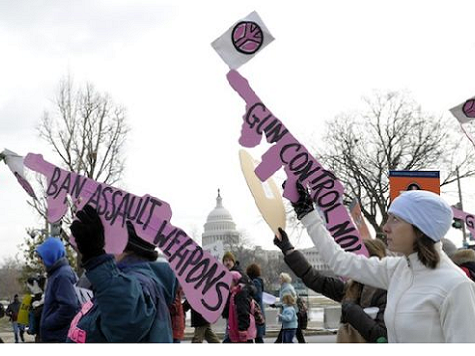
In the fall 2013 edition of the Journal of American Physicians and Surgeons (JPandS), Jane M. Orient, M.D., takes apart the long standing gun control advocate arguments of many medical groups to show that guns do not cause crime, people do.
Orient looks at “advocacy campaigns” for “treating gun violence” that have been sponsored by the American Medical Association (AMA) and the American College of Physicians (ACP) and says these groups have fashioned gun violence as a “health problem” rather than a “crime problem.” In so doing, they have avoided the real causes of violence and to pursue federal funding for research from an advocacy perspective.
According to Orient, in many cases these and other medical groups have missed the real causes behind crime because their advocacy often comes with “a political agenda” attached.
Orient shows how this “public health approach” included supporting more gun control laws following the heinous crime at Sandy Hook Elementary, although “the latest and purportedly best study provides no support to the call for more restrictive gun laws as a means to prevent homicide.”
She also examines how various medical groups frame gun violence in terms of a safety issue. She focuses especially on the way such groups and their allies suggest the government is more worried about motor-vehicle safety than gun safety.
But Orient shows that such claims betray a misunderstanding of causal factors behind crime:
A major fallacy in the analogy between motor-vehicle crashes and shootings is that crashes are almost always accidental, and shootings are almost always intentional. Thus, in the former, the safety characteristics of cars and roads are highly pertinent, whereas in the latter the issue is why a shooter decides to pull the trigger.
Orient argues that the design of the car–including things like center of gravity in SUVs–are very important because the cause of a crash is often external to the driver. But when it comes to crime, it is the person rather than the gun who is to blame. In other words, the cause is internal. Thus, medical advocacy groups take the wrong approach when they place emphasis on “the guns themselves” instead of on “factors related to violent behavior, apart from mental illness.”
She bolsters this point by showing there is no real reduction in violent crime in certain countries where there has long been higher levels of gun control than in the U.S.
For example, Canada has had “strictly regulated handguns for more than a century” and required the registration of all handguns “since 1934.” Yet, although the northern-most U.S. states adjoining Canada “have a three to ten-fold higher prevalence of handgun ownership… no consistent differences were observed in violent homicide rates.”
In other words, in the absence of guns Canadians prone to violence were able to find other lethal means to use.
A 2007 study in the Harvard Journal of Law and Public Policy made this same point based on suicide numbers in England following gun bans there. According to the study, while gun control advocates were celebrating a drop in the number of firearms used in suicides, they overlooked the fact that suicides among “English youth” actually rose as a growing number of people simply found other ways to kill themselves.
The gun is not the culprit. Rather, the person intent on assaulting or killing another person is the culprit.
Guns do not cause crime, people do.
Follow AWR Hawkins on Twitter @AWRHawkins

COMMENTS
Please let us know if you're having issues with commenting.